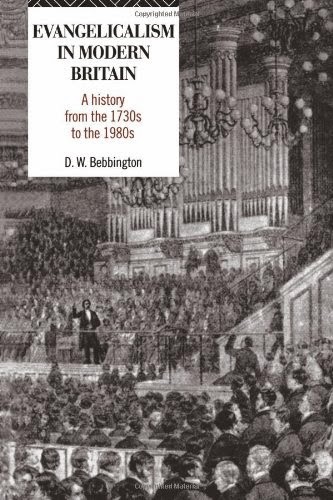 A week or so ago, I posted a link to John Fea’s blog The Way of Improvement Leads Home, in which the Messiah College historian shared some thoughts on the definition of the term “Evangelicalism.” And even though I posed the question, none of my readers shared their thoughts on the other characteristics they might add to the term.
A week or so ago, I posted a link to John Fea’s blog The Way of Improvement Leads Home, in which the Messiah College historian shared some thoughts on the definition of the term “Evangelicalism.” And even though I posed the question, none of my readers shared their thoughts on the other characteristics they might add to the term.
Now, Fea is tackling this question once again by reporting on two sessions he attended at the recent Conference on Faith and History. In a three-part post, Fea recapped “Defining Evangelicalism at the Conference on Faith and History.” Those posts are available here, here, and here.
I’d encourage you to read the posts in their entirety. In the first two, leading historians of religion — including Darren Dochuk, Molly Worthen, and the indefatigable Mark Noll — share their thoughts on the so-called Bebbington Quadrilateral, a four-part characterization of Evangelicalism first developed in his 1989 book Evangelicalism in Modern Britain that has become a standard definition in historical communities.
In the third post, scholars of American religion reflect on the significance of Mine Eyes Have Seen the Glory, a kind of travelogue of religion scholar Randall Balmer’s “journey into the Evangelical subculture in America” (as the book’s subtitle declares). All of the scholars point out how Balmer’s more journalistic account of Evangelicalism in America differs from the more scholarly treatments (by people like Bebbington). A different understanding of Evangelicalism, they suggest, emerges when the concept is examined “in real life” rather than from a scholarly distance.
The posts are so full of rich insights that it’s hard to recap them in a post such as this!
Nevertheless, this excerpt might entice you to read the posts in their entirety:
For example, the college where I teach–Messiah College–is certainly evangelical in essence, but it is also diverse enough–both in terms of student body and faculty–that it does not seem to identify with “evangelicalism” in the way that a place like Wheaton College might identify with the term or the movement. While some of our students and faculty might find a theological and ecclesiastical genealogy in the organizations and churches affiliated with the National Association of Evangelicals or Christianity Today or Billy Graham, others come from Anabaptist, Pentecostal, theologically conservative or moderate mainline Protestant, or even Roman Catholic backgrounds. Messiah is a very evangelical place. It strongly adheres to the authority of the Bible, the belief that Christians should be sharing their faith and addressing social problems, the centrality of the Cross, and the need for conversion (although not everyone would completely endorse a belief in the New Birth). But is it part of a movement known as “evangelicalism?” Maybe.
Readers: What do you think of these attempts to define (or re-define) “Evangelicalism”? Share your thoughts below!

Mark Noll makes an interesting argument that evangelicalism does not exist per se but rather that different Christian groups exhibit evangelical traits. I appreciate the way this perspective raises the question of how evangelicalism relates to different Christian traditions. In particular, it raises the question of whether evangelicalism should be thought of as a tradition/movement of its own or whether it is instead a helpful description of traits inside groups that can be more easily identified as having a shared history or institutional association. Framed this way, this question also suggests the possibility that these evangelical traits should be thought of as a particular dominate series of traits that exhibit themselves from within multiple denominational contexts/traditions rather than belonging to an external movement influencing these traditions from without. The possibility of framing the question of evangelical identity in this way may be very helpful for those of us pondering the intersection of evangelical identity and Anabaptist identity (or any other denominational/traditional identity).